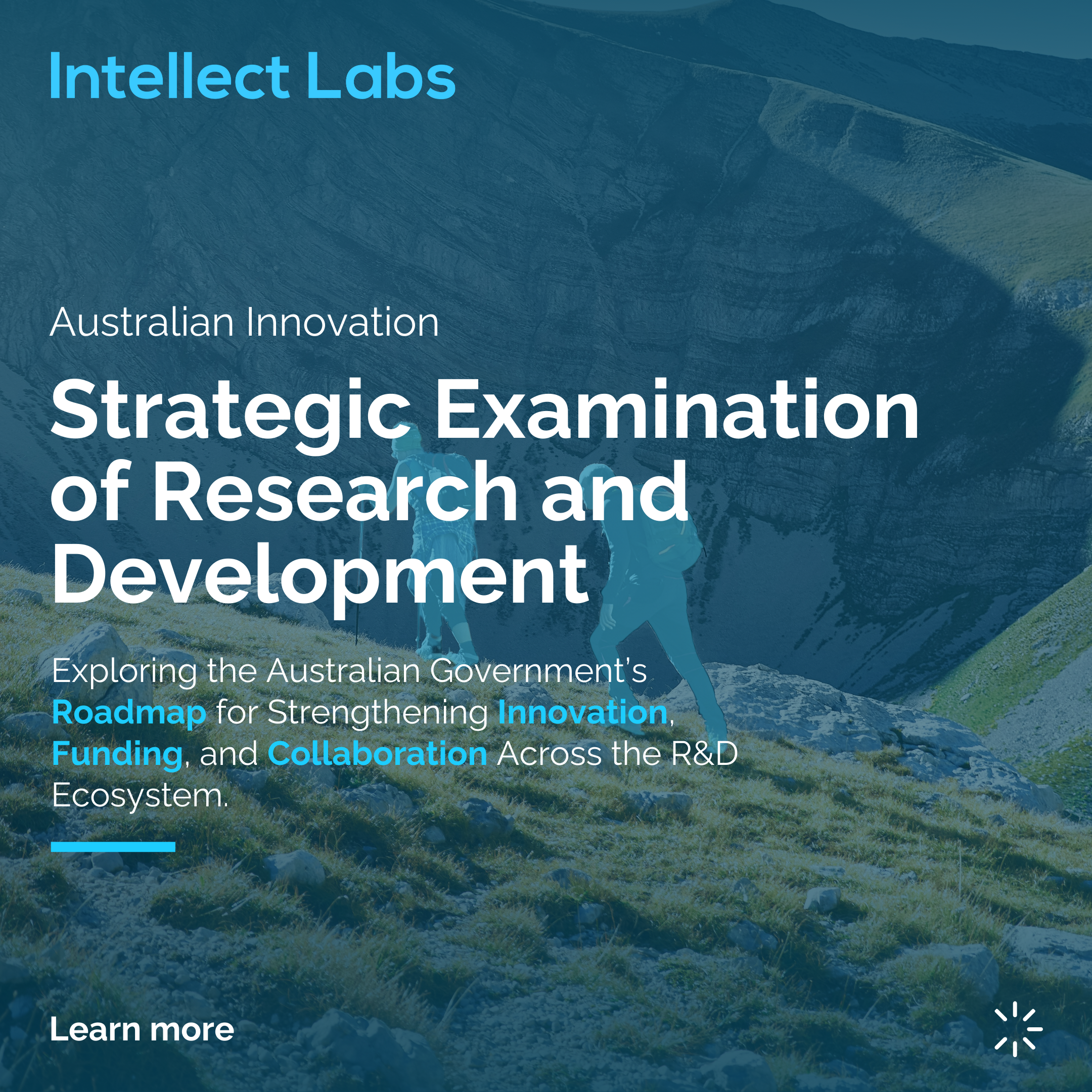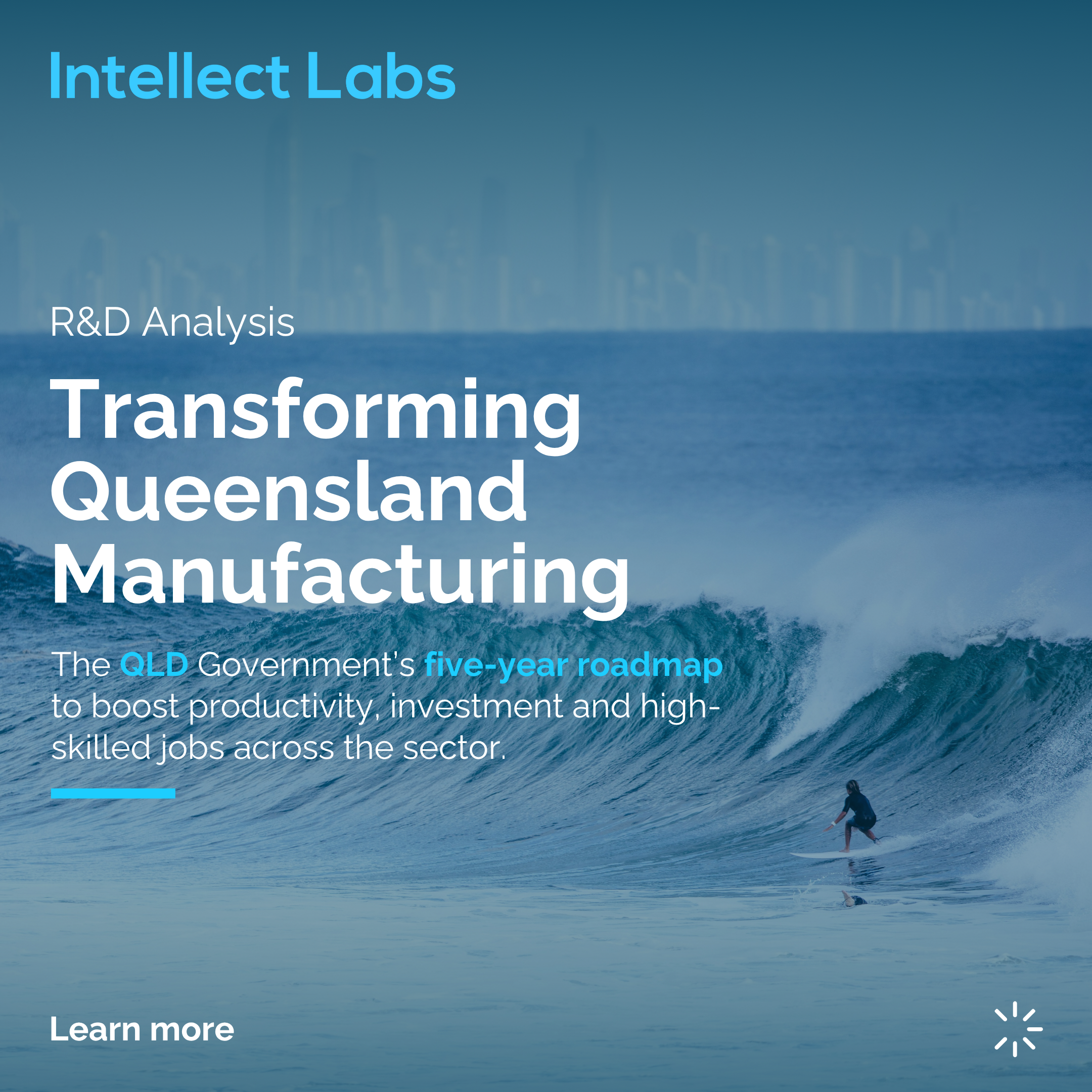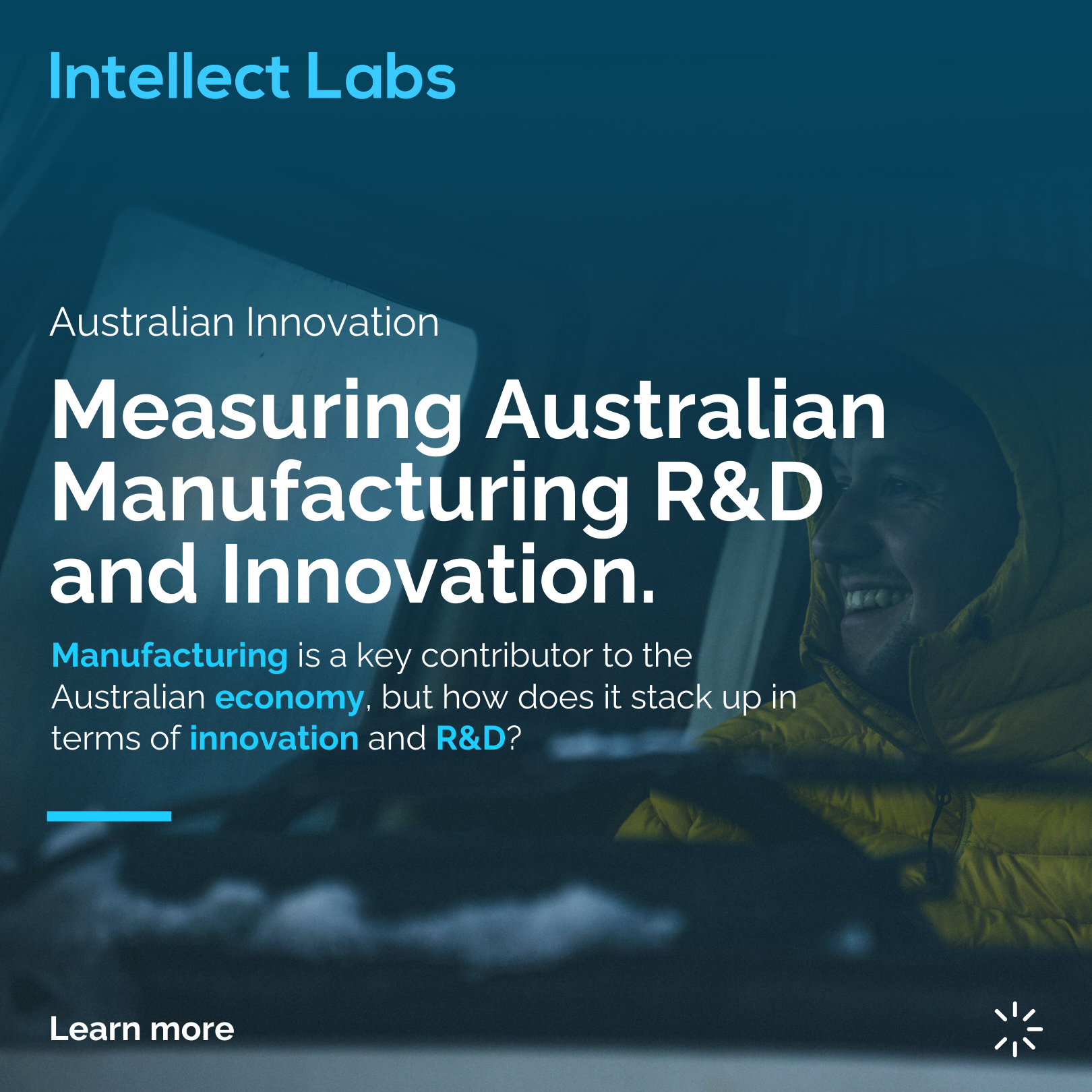
Insights Lab
Latest insights, research and strategies to help support innovators to achieve real outcomes.
Latest Insights
Industry Growth Program Update
The Industry Growth Program (IGP) has quickly become one of Australia’s most in-demand innovation support initiatives. Since its launch in 2023, the program has awarded 96 grants totalling $143million to a range of SMEs — representing the allocation of just over 50% of the original funding pool.
This ‘halfway point’ provides a perfect moment to reflect on the outcomes and distribution of IGP grant funds to date. We’ve reviewed the available data and provided a detailed summary. The analysis highlights the urgency needed for any SMEs that are interested in the program but yet to apply, particularly given that grants can’t be accessed until an initial business advisory process is completed.
The Queensland Government has launched the $180.6 million Sovereign Industry Development Fund (SIDF) to strengthen the state’s capacity to manufacture, supply and sustain key goods and services locally. The program supports strategic and catalytic projects in defence, biomedical and biofuels sectors to boost innovation, jobs and regional growth. To learn more read the full article here.
The Australian Government Department of Industry, Science and Resources (DISR) has released a series of six Issues Papers written by the independent Strategic Examination of Research and Development (SERD) panel and follow analysis of a published discussion paper and public submissions feedback on how to maximise the value of existing investment in R&D, strengthen linkages between research and industry, support the achievement of national priorities, drive greater R&D investment by industry and boost innovation, and uplifting Australia’s overall R&D intensity.
Summary of the previous quarter of developments in the world of the R&D Tax Incentive (R&DTI) program.
The World Intellectual Property Organization has released its 2025 Global Innovation Index, ranking 139 economies across 80+ indicators from R&D spending to VC activity and IP filings. This year’s theme, “Innovation at a Crossroads,” calls for smarter policy, deeper collaboration, and more inclusive growth.
The R&D Tax Incentive is projected to reach $4.6B in public funding in 2026, and 86% of claimants rely on advisors to access it. That means our industry collectively helps steward almost $4B in taxpayer-funded innovation support each year. With that responsibility comes the need for practices that build confidence in the system, including clear and transparent fee models that align with the intent of the program.
The Australian Government has released the 2026 National Research Infrastructure Roadmap Issues Paper, setting priorities that will shape research investment over the next decade. This process will directly influence future MRFF and NHMRC infrastructure funding, with a strong focus on translation, digital capability, sovereign manufacturing and the research workforce.
The State Government’s Transforming Queensland Manufacturing Strategy 2025–30 was recently announced and sets out a five-year roadmap to drive innovation, investment, and regional growth. We’ve summarised the key announcements and what it means for Queensland manufacturers of all sizes.
The R&D Tax Incentive (RDTI) program is a popular, broad-based funding program that covers a diverse range of industries and experimental work. It allows companies to offset certain costs incurred on eligible research and development activities each year. However, not all expenditure can be claimed, and there are a range of expenses that are excluded from being eligible R&D expenditure under the program.
For many Australian innovators, research and development is both the lifeblood of their business and one of its largest expenses. The R&D Tax Incentive (R&DTI) is designed to offset some of these costs, returning up to 48.5% of eligible expenditure to small and medium enterprises as a refundable tax offset. However, the timing of this refund can present a challenge. R&D financing has emerged as a way to address this timing gap.
Australia’s manufacturing sector has a proud history, quietly over-achieving in terms of R&D investment and innovation activity over many years.
In our latest analysis, we deep-dive into recent data from ABS reports and government programs to provide a snapshot on where Australia’s manufacturing sector currently stands in the face of emerging local and global challenges.
A significantly updated version of the R&D Tax Incentive (R&DTI) application form was officially released on 15 August 2025. The new form is now available (and is mandatory) when you are seeking to register your R&D activities via the R&DTI portal for FY25 and beyond.
The Australian Government Department of Industry, Science and Resources (DISR) has released a series of six Issues Papers written by the independent Strategic Examination of Research and Development (SERD) panel and follow analysis of a published discussion paper and public submissions feedback on how to maximise the value of existing investment in R&D, strengthen linkages between research and industry, support the achievement of national priorities, drive greater R&D investment by industry and boost innovation, and uplifting Australia’s overall R&D intensity.
The R&D Tax Incentive (RDTI) program is a popular, broad-based funding program that covers a diverse range of industries and experimental work. It allows companies to offset certain costs incurred on eligible research and development activities each year. However, not all expenditure can be claimed, and there are a range of expenses that are excluded from being eligible R&D expenditure under the program.
Non‑dilutive funding can accelerate your innovation without giving up equity but navigating the grant landscape is tricky. A clear grant strategy helps you identify the right programs, prepare competitive applications, and avoid chasing grants that don’t fit.
An important reminder for Australian businesses with a 30 June year financial year that the deadline for lodging your 2023-24 R&D Tax Incentive (RDTI) Application is fast-approaching.
Insights into Medical Research Future Fund (MRFF) grant allocation, success rates, and key initiatives over time. As MRFF funding continues to shape the future of health research in Australia, understanding these trends can help applicants refine their strategies and improve their chances of success.
With the Queensland State Government election fast-approaching, it’s important that any Queensland businesses that are considering applying for state government funding understand what impact the election will have on grant programs. We’ve summarised our analysis of the impact that elections can have on the grant funding landscape, with a particular focus on the Queensland State Government election in October.
Featured Posts
Featured Grants
A federal government initiative with $150 million of matched funding available for this first round.
Case Studies
Over $1.5mill in funding secured across several State & Federal government grant funding programs will help the WiseRepro Group deliver its critical bovine reproduction services to more primary producers in regional Queensland and grow Australia’s bovine genetics export market.
LSQ engaged Intellect Labs to support a comprehensive strategic review to clarify its long-term direction, value proposition, and operating model.
Internet 2.0’s case illustrates how a well-prepared Overseas Funding application can lead to significant financial support and increased investor confidence. It underscores the importance of strategic planning and thorough documentation in the R&D tax incentive process.
With the help of the R&D Tax Incentive (‘RDTI’) program, Dataweavers is investing in R&D to deliver innovative solutions for deploying complex enterprise marketing technology and Digital Experience Platforms (DXPs) in the public cloud.
Ridley Corporation is accessing the R&D Tax Incentive (‘RDTI’) to help them drive innovation in Australian agriculture by providing advanced, sustainable animal nutrition solutions that assist farmers to enhance animal health and productivity while reducing environmental impact.
A $5m grant from the Medical Research Future Fund (MRFF) will help Southern RNA combine its new manufacturing capability with the Queensland research community to create an end-to-end mRNA translation ecosystem.
Start-up medical device company Neurode is accessing the Federal Government’s flagship innovation program, the R&D Tax Incentive (‘RDTI’), to improve quality of life for people diagnosed with ADHD.
Great Wrap is on a mission to remove the 150,000 tonnes of plastic stretch wrap sent to Australia’s landfill each year. A $535,000 grant from the Advanced Manufacturing Growth Centre will help them to do just that.
$2.57m from the Federal Government’s flagship manufacturing program will help Cyclowest fast-track production of next generation cancer treatments.

























